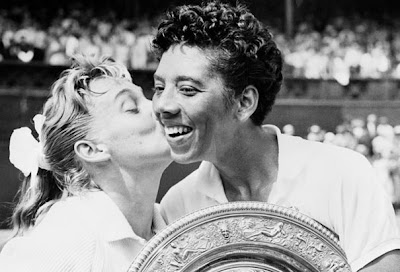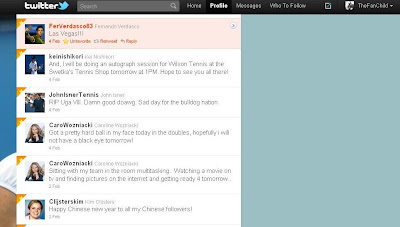
===
Unlike the other next big thing (Milos Raonic) currently speeding up the ATP rankings, Alexandr Dolgopolov doesn't have the glacial demeanor or the pragmatic mindset. When you watch him it's hard to get a read on what he's thinking out there.
Does he think, I wonder, or does he just flow?
Whatever he does, he's done it well this year, with an electrifying feature piece-inspiring quarterfinal run at the Australian Open, and a fast and furious climb that has taken him into the top-30 as of this week.
Still, even while playing the best tennis of his career, there are incongruous stretches during matches where Dolgopolov can't seem to keep the ball in the court. It begs the question: Can Dolgopolov sustain his current scorching form while performing his jeckyll and hyde brand of tightrope walking on a near nightly basis?
That's what I'm wondering right now as I've watched Dolgopolov completely deconstruct against David Ferrer in the second set of their semifinal on the red clay in Acapulco. If I didn't know him I'd assume that he's in deep trouble, that he's dug a hole for himself that he'll likely never climb out of.
But there is something inexplicable about Dolgopolov that leads me to believe that you can throw out all your preconceived notions about the importance of a linear and focused mental game on the court. The kid is clearly different, and therefore I'll do him the honor of looking at him through different parameters.
Dolgopolov is one of those rare animals that can get away with being haphazard on the tennis court. But getting away with it is one thing (he's done it admirably this season, to be sure); Getting to the top of the sport while getting away with it is entirely another.
I've been watching the kid they call "the Dog" for a few hours tonight and it hasn't always been pretty. He's playing against the consummate grinder in David Ferrer, and while he got off to a good start in taking the first set, he's currently swimming in a sea of unforced errors and doesn't appear to have any desire to attempt to play steadier.
I can't help but wonder, as Ferrer goes up a break in the third, is this going to be the curse of Dolgopolov? Is he going to be the next Gulbis, an infuriating combination of red-hot shotmaking ability and ice-cold decision making?
I hesitate to lump him in with Gulbis, but there are similarities between the two that are hard to deny. Then again, I see a difference, and the difference, strange as it may seem, may prove to be the difference.
While Gulbis tends to become downtrodden, gloomy, and sarcastic, wading in a pool of his own self-loathing, Dolgopolov seems to have a more positive spiritual makeup.
Case in point: Here he is, in the third set against the devil incarnate and on the short end of the momentum stick, but he still seems to be enjoying himself. And in between his slew of unforced errors are some of the most dynamic strokes I've seen in a long time. Not only can Dolgopolov tattoo the ball from both wings, but he can also mix in tantalizing drop shots, ground-biting slice, and deceptively dangerous first serves that can wreak havoc on even David Ferrer.
So where does all this leave us?
In Dolgopolov we clearly have a wildly entertaining athlete with all the tools to be a top player. But, once again, we have a long list of questions about his tactical approach, his mental maturity, and his ability to govern his souped-up engine when the tone of the match calls for it.
Tonight, his early flourish proved to be a mere speed bump in another convincing David Ferrer bloodletting. It could have been different, if Dolgopolov would have downshifted somewhere in the second or third set and taken the time to get his legs back underneath him.
Could have, would have, should have.
Dolgopolov's tempo, it appears, can be as bad for him at times as it is good for him at others. If there are holes in your game, leave it to a guy like David Ferrer to shine a light through them. That's what happened tonight.
When plan A was clearly not good enough for Dolgopolov, plan B was nowhere to be found.
The eternal optimist in me says that Dolgopolov is a few more hard lessons away from realizing that sometimes plan B is the only way to go, and that the young Ukranian's best days are just around the corner.
Here's to hoping I'm right.









